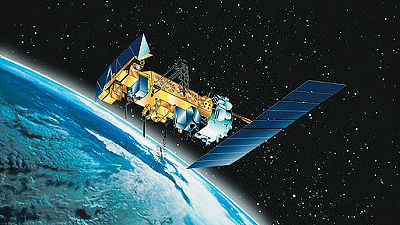Net connection by airplane in-flight Wi-Fi is realized like this

Internet can be used in airlinersIn-flight Wi-FiThe number of planes corresponding to the number of airplanes has increased so that you can spend more and more comfort in the air travel, but if you think about it well, the mechanism that delivers internet lines to the aircraft flying at a tremendous speed tends to be unintelligible is. Communication methods that enable internet communication by airplane are ground system and satellite system, and there are hybrid system combining these two, but we will also provide technology on its main communication system to travel information siteThe Points GuyIt is summarized.
How Does In-Flight Wi-Fi Really Work?
http://thepointsguy.com/2015/11/how-in-flight-wi-fi-works/
◆ Method 1: Air-To-Ground method (ATG method)
The "ATG (Air-To-Ground) method" is often used in routes that do not fly offshore, mainly domestic flights. I think that you can grasp the image by looking at the following figure, but in the ATG method, by communicating with the ground base station installed along the aircraft route, we realize in-flight Wi-Fi.
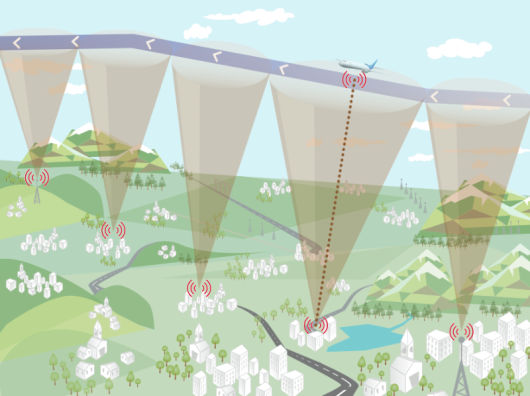
In the ATG system, communication is carried out by attaching two antennas to the bottom of the airframe. It is said that the communication speed possible with the "ATG-3" method which is popular as of 2015 is 3 Mbps, which is the level that it can be done without problems if receiving mail or checking SNS. American telecommunications company ·GogoIs progressing the introduction of the latest "ATG-4" system which raised the speed up to 10 Mbps, but it seems that it has not yet reached the stage to replace the ATG - 3. We also have a weak point that communication will be lost if you leave the base station area.
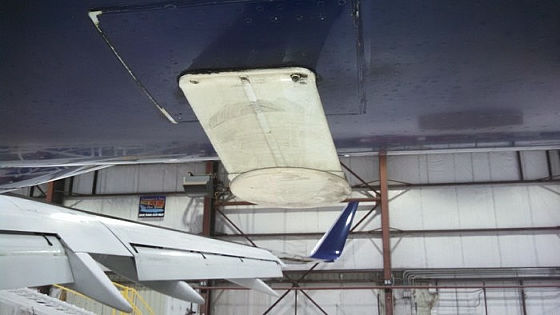
◆ Method 2: Satellite communication using Ku band
Of course there are methods to communicate via space satellites without relying on terrestrial base stations. One of them is radio waves of 12 GHz to 18 GHzKu bandIs used. In the figure below, the contents operated by the user on the aircraft reaches the ground via the satellite, and the state sent back from the server to the satellite is shown again to return to the airplane.

Radio waves with Internet communication arrive from outer space, so the antenna in this case is attached to the upper part of the fuselage. When removing the dome-like parts covering the antenna, the antenna is installed inside like this, so that the angle can be changed according to the direction of the satellite.
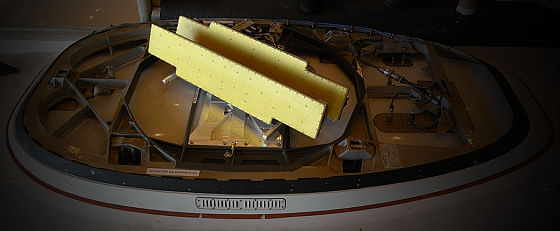
The advantage of this method is that once the airplane grabs the radio waves of the satellite it is in a place where it can deliver speeds of up to 30 - 40 Mbps. Nevertheless, there is a disadvantage that the speed decreases as the number of aircraft handled by small satellites is large, so there are simultaneous disadvantages. Also, it is inevitable that a delay for passing through the satellite occurs, so it seems that there is a possibility that the total loading time may be required due to the delay even if a fast speed comes out.
◆ Method 3: Satellite communication using Ka band
The Ka band which uses a higher frequency than the above-mentioned Ku band is a band that was once secured for military use, so its ability is high. Ka band communication provided by satellite communication company ViaSat guarantees communication of up to 70 Mbps for all aircraft handled, and it can be said that it is the fastest in-flight Wi - Fi system at the moment.
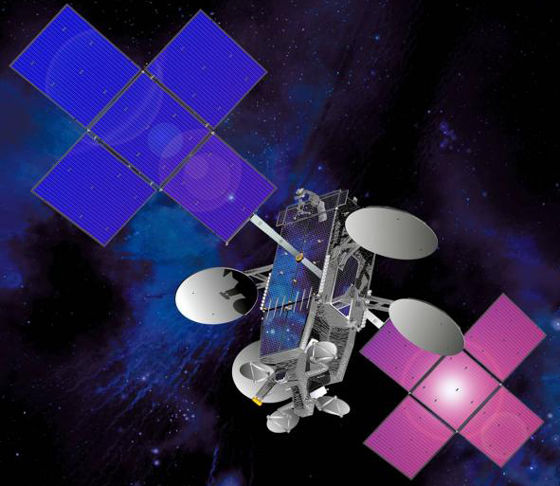
As of 2015, only one satellite "ViaSat - 1" is compatible with the Ka band, and the service area is limited to the USA only. ViaSat is planning to launch a second satellite in 2016 and it seems that the area will be expanded to parts of Canada and Europe when operation starts.
In addition, ViaSat-1 satellite is the satellite Internet service for the groundExede(Exceed), but a cheap airline JetBlue offers in-flight Wi-Fi service using it at $ 9 per hour (about 1100 yen).
◆ Work done for the introduction of in-flight Wi-Fi
Most of the aircraft are not equipped with in-flight Wi-Fi facilities at the time of construction. Therefore, installing an antenna on the airframe and bringing in radio waves inside the aircraft Installation of Wi-Fi in the flight is mostly a work of peeling the interior.

The state of the work is well understood by seeing the following movie created by United Airlines.
United - Wi-Fi Installation - YouTube
Airplane carried in maintenance hangar
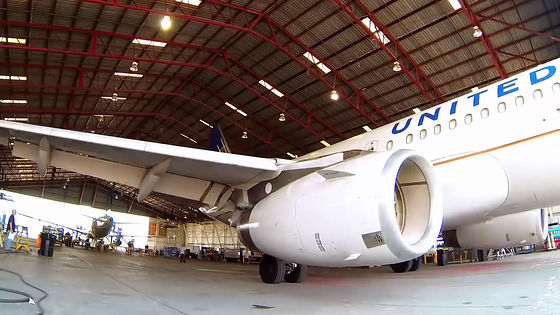
At the side of the fuselage, there is a frame for mounting the antenna.
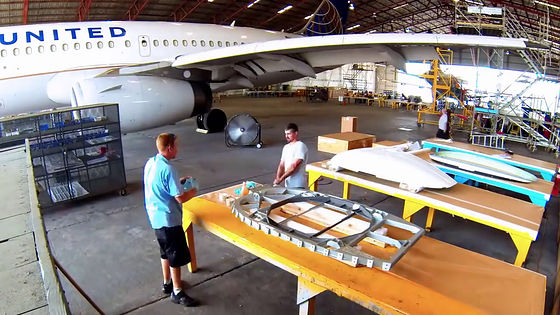
Combining the footholds to make a working table ... ...

Set up a working jig on the top of the aircraft.
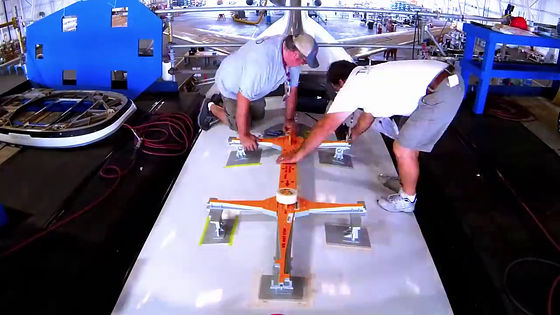
We are preparing to introduce Wi - Fi equipment inside the cabin. This is the compartment containing the control panel under the floor.
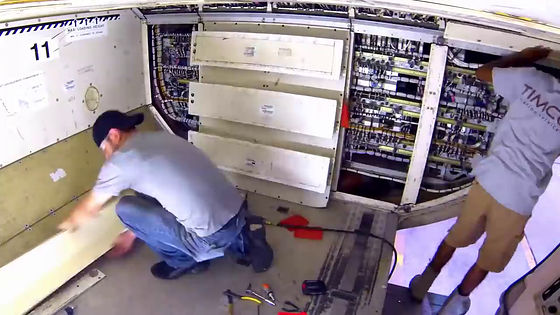
Remove the chair in the room to secure the work space.

In the hangar, cables that are tens of meters in length are prepared.
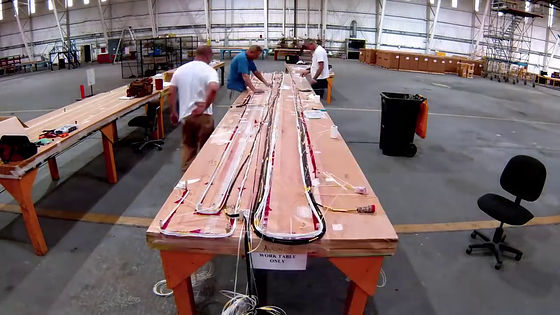
Carrying the antenna with a crane car ... ...
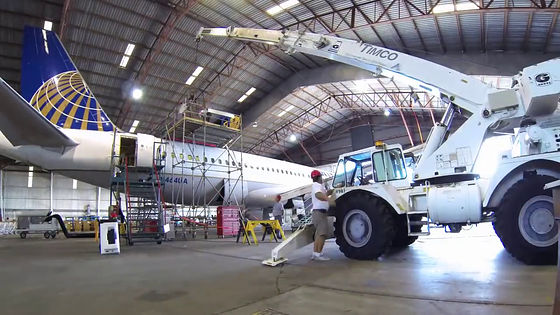
Fixed frame and antenna firmly.
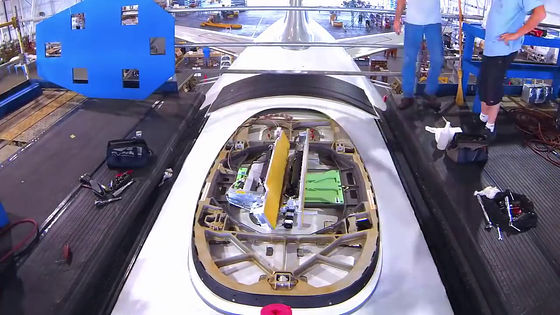
Finally the dome is put on and the installation work is completed.
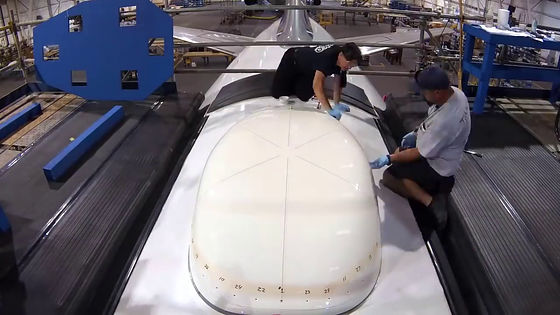
You can see the dome lifted a little just before the vertical stabilizer. The antenna inside this catches radio waves from artificial satellites or sends radio waves in reverse.
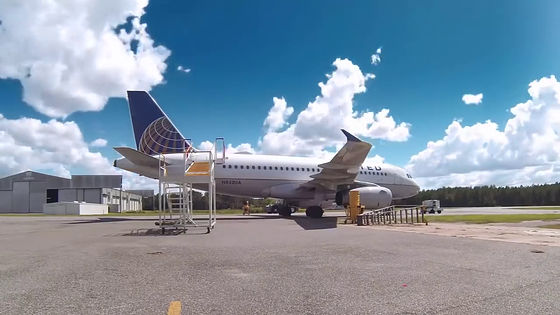
Related Posts:





